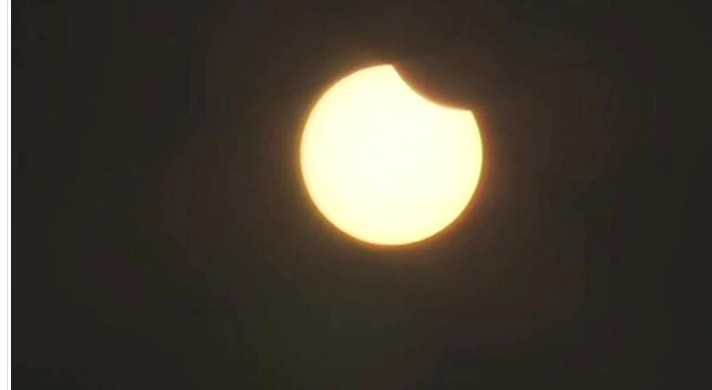The annular solar eclipse, the last one of the year, has begun. While a large crowd has gathered in north Kerala’s Cheruvathur and Wayanad to witness the eclipse, a thick cover of cloud is likely to hamper viewing in large parts of Maharashtra. The eclipse can be viewed in India between 8.05 am to 11 am
The beginning of the eclipse was first seen from the Arabian sea coast of Oman at around 7:59 hours IST and the annular eclipse will become first visible in west of Baharain at 09:06 hours IST, Debiprosad Duari, theDirector, Research and Academic of MP Birla Institute of Fundamental Research,MP Birla Planetarium, said.
In the Indian sub-continent, the an nularity phases will beseen within a narrow path grazing the southern Indian peninsula through Karnataka, Kerala and Tamil Nadu before crossing the Bay of Bengal for northernSri Lanka.
The people of the southern part of the country will see agreater part of the partial solar eclipse because of the geometry of theeclipse path. But every Indian will get an opportunity to see at least apartial eclipse.
In India the maximum duration of the annularity phases willbe just over 3 minutes, said DuariThursday’s eclipse will be visible in SaudiArabia, Qatar, United Arab Emirates, Oman, India, Sri Lanka, Malaysia,Indonesia, Singapore, Northern Mariana Islands, and Guam.A solar eclipse occurswhen the Moon passes between Earth and the Sun, thereby totally or partlyobscuring the Sun for a viewer on Earth.An annular solar eclipse takes placewhen the moon’s apparent diametre is smaller than that of the Sun’s and blocksmost of the Sun’s light. This causes the Sun to look like a ring (annulus) offire, Debiprosad Duari, the Director, Research and Academic of MP BirlaInstitute of Fundamental Research, MP Birla Planetarium, said.
Leave a comment
Your email address will not be published. Required fields are marked *


